Cowls on oast houses are a significant part of the building. They are there for a purpose, and on any working oast house they are not there simply to look good as the finishing touch to the roundel. They serve a practical purpose, much more than just the cherry on the cake. Below are Sussex Cowls.
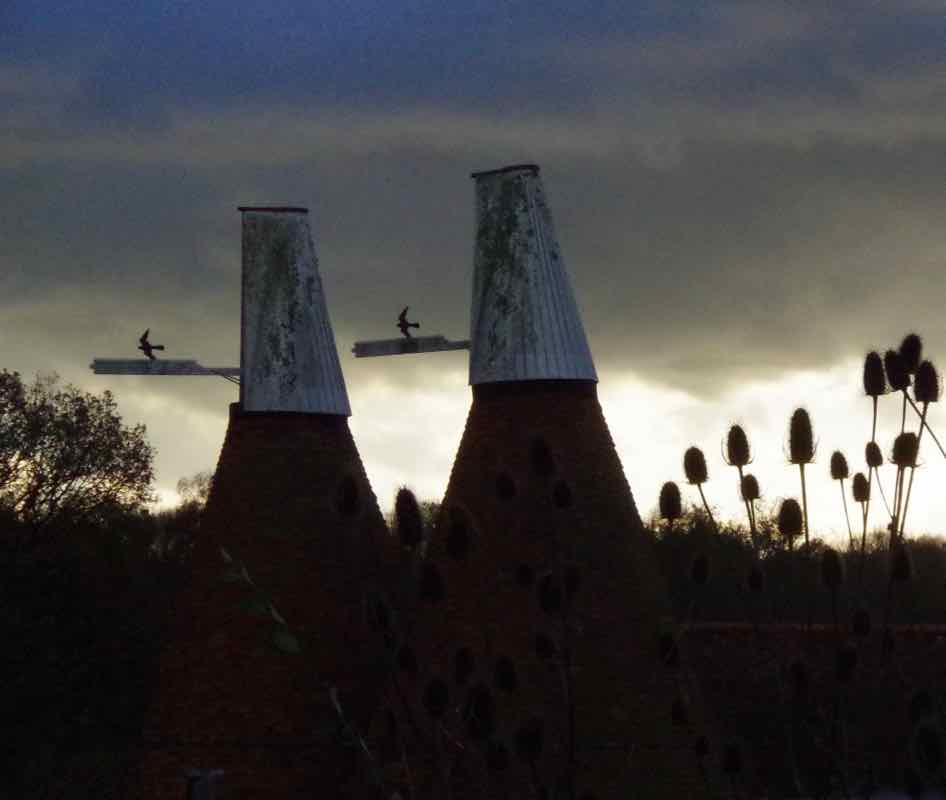
Oast houses, like giant chimneys, are built for draughts and cowls on oast houses are a significant part of the building to assist with 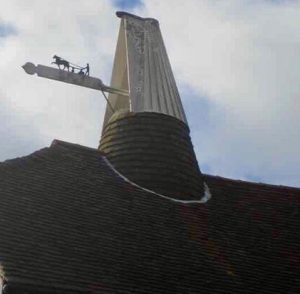 these draughts. The slightest breeze will catch the arm of the cowl, turning it around until it’s back is set against the wind, which in turn creates a slight vacuum. This vacuum helps draw the air up from inside the kiln, up through the bed of hops and in turn through the entire building. The amount of draught can be regulated by opening and closing different doors, it is discharged via the cowl outside of the building. If hops are being dried this air takes the reek, or moisture, out with it. For airflow to pass through a bed of hops a kiln floor is slatted, making a working oast house is full of shadows. Below is a Hereford Cowl and right an inset kiln with a sussex cowl.
these draughts. The slightest breeze will catch the arm of the cowl, turning it around until it’s back is set against the wind, which in turn creates a slight vacuum. This vacuum helps draw the air up from inside the kiln, up through the bed of hops and in turn through the entire building. The amount of draught can be regulated by opening and closing different doors, it is discharged via the cowl outside of the building. If hops are being dried this air takes the reek, or moisture, out with it. For airflow to pass through a bed of hops a kiln floor is slatted, making a working oast house is full of shadows. Below is a Hereford Cowl and right an inset kiln with a sussex cowl.
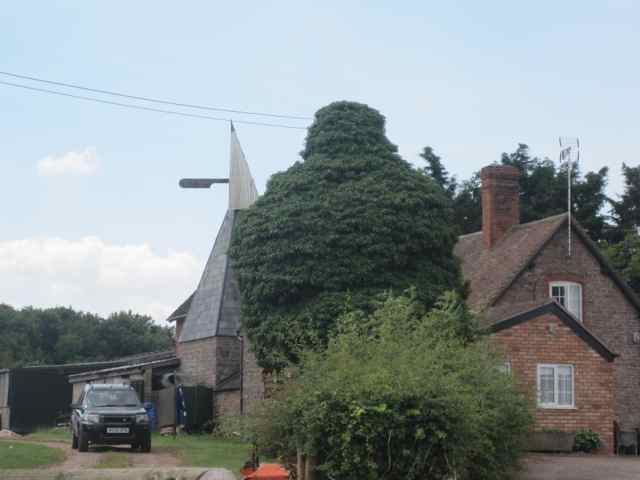
This natural air flow has another advantage by keeping the downstairs of an oast house cool. Small windows limit most of the natural lighting coming in, leaving this cool, twilight area of the lower chamber perfect for storage. The two floors of a traditional oast house are used for different purposes, whilst downstairs is for storing pockets, upstairs is used for cooling the dried hops straight from the kiln. Up here the atmosphere is a little warmer, gentler and softer. Once cooled slightly, the hops are pressed into pockets which drop down from the press hole onto the lower ground level for marking, weighing and recording before being stood upright for storage. From here they will eventually be loaded to leave the farm. Growers send their crop off to a hop factor, merchant or sometimes direct to a brewery.
 Cowls on oast houses naturally need occasional maintenance. General building upkeep of an oast house is done by the individual hop grower but any work on a traditional cowl is a job requiring a specialist firm. Dude and Arnette are well known for their cowl building skills, whether it is building new ones or repairing old ones. Often a cowl will need to be removed to have this work done.
Cowls on oast houses naturally need occasional maintenance. General building upkeep of an oast house is done by the individual hop grower but any work on a traditional cowl is a job requiring a specialist firm. Dude and Arnette are well known for their cowl building skills, whether it is building new ones or repairing old ones. Often a cowl will need to be removed to have this work done.
One of my favourite oast houses is the one at Great Dixter, a beautiful building with its 3 inset kilns
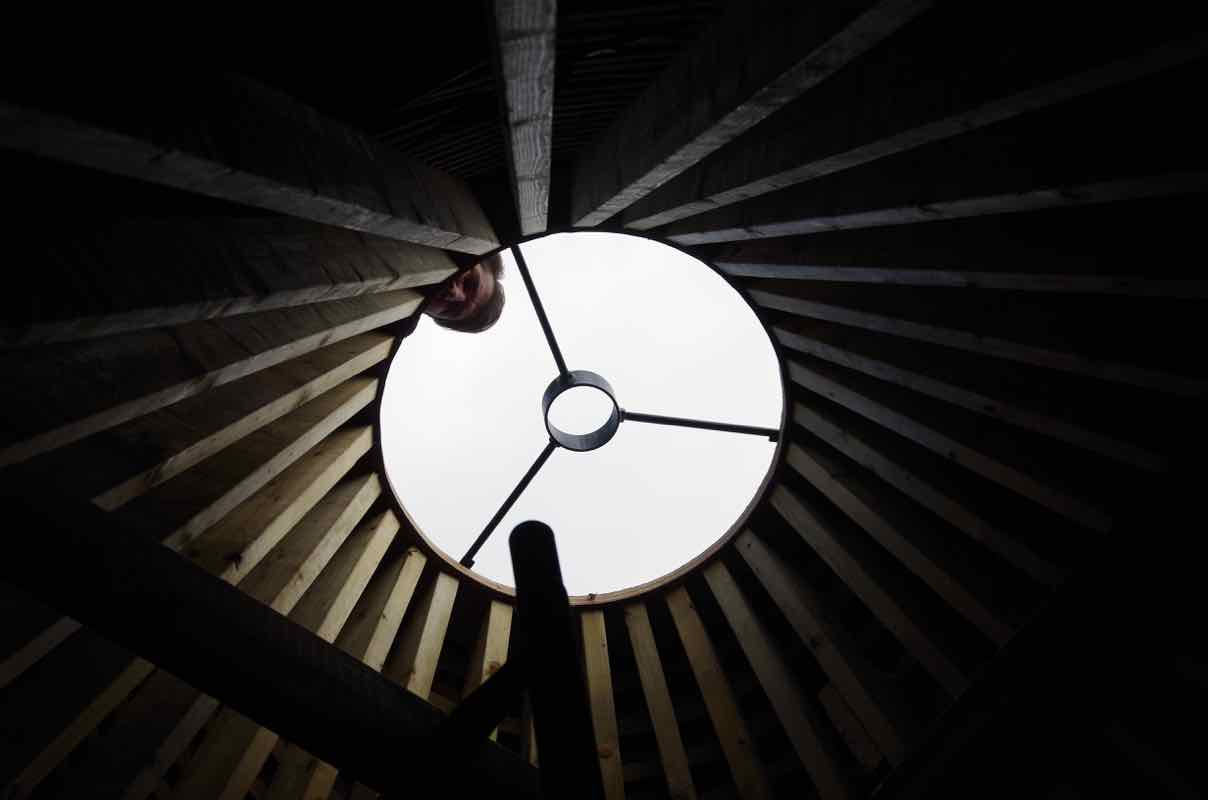
However, times have certainly changed for the majority of these most iconic of farm buildings. When they are converted the cowls are only for decoration, draughts definitely aren’t needed then!
Cowls on oast houses vary in design too. Like local dialects each hop county has it’s own variation of the cowl. There are different styles for Kent, Sussex, Norfolk, Hereford and Worcester. Occasionally exactly as in real life, you will find the odd maverick, a one off true only to itself!
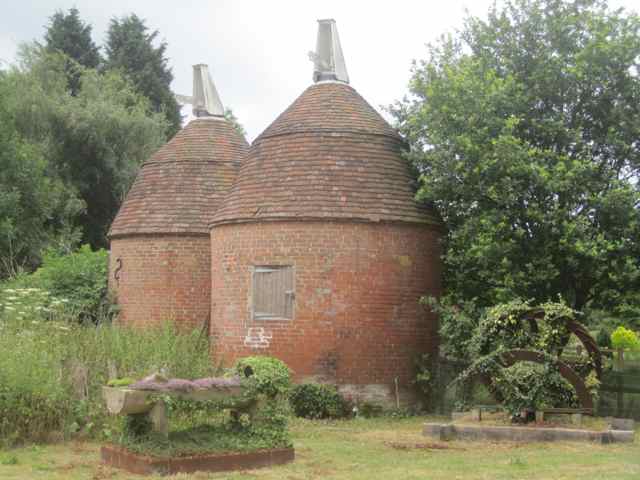
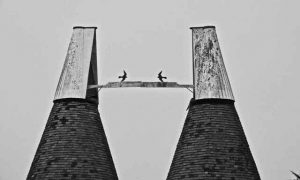 Normally if there are two cowls they will face the same way, as they turn with the prevailing wind. Occasionally cowls will face each other which is known as ‘bulling’. Country lore says that this foretells a change in the weather.
Normally if there are two cowls they will face the same way, as they turn with the prevailing wind. Occasionally cowls will face each other which is known as ‘bulling’. Country lore says that this foretells a change in the weather.
Below is another cowl, a malting one perhaps?


